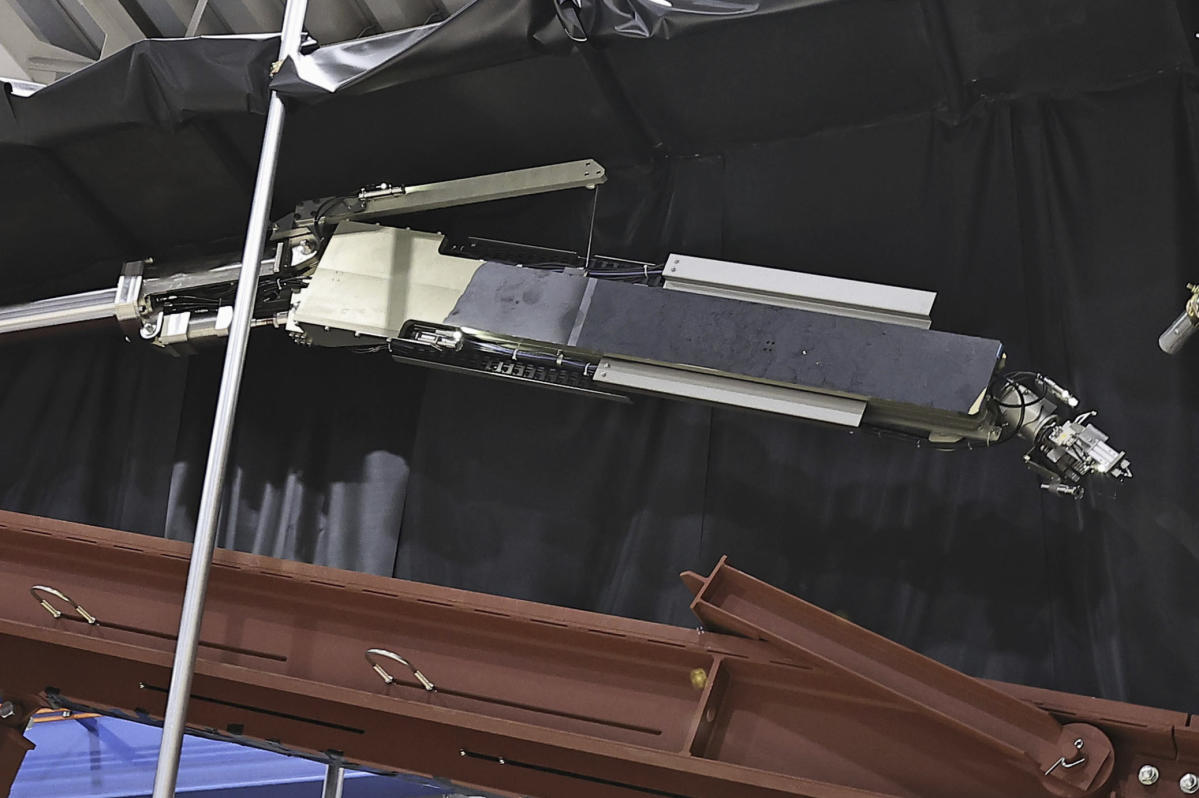TOKYO (AP) — The operator of Japan’s Fukushima Daiichi nuclear power plant demonstrated Tuesday how a remote-controlled robot would extract small pieces of melted fuel waste from one of three damaged reactors later this year for the first time since the 2011 nuclear meltdown.
Tokyo Electric Power Company Holdings plans to deploy an extendable telescopic-style pipe robot at Fukushima Daiichi’s No. 2 reactor by October to test the removal of debris from the primary containment vessel.
That work is more than two years behind schedule. The removal of melted fuel was scheduled to begin in late 2021 but has been plagued by delays, underscoring the difficulty of recovering from the 2011 magnitude 9.0 earthquake and tsunami.
During the demonstration at the Mitsubishi Heavy Industries shipyard in Kobe, western Japan, where the robot was developed, a device equipped with tongs slowly descended from the telescopic tube to a pile of gravel and picked up a grain.
TEPCO plans to remove less than 3 grams (0.1 ounce) of debris during the test at the Fukushima plant.
“We believe that the upcoming test removal of fuel residues from Unit 2 is an extremely important step to steadily carry out future decommissioning work,” said Yusuke Nakagawa, a TEPCO group manager for the fuel residues collection program. “It is important to continue test removal safely and steadily.”
There are still approximately 880 tons of highly radioactive melted fuel in the three damaged reactors. Critics say the 30- to 40-year cleanup target set by the government and TEPCO for Fukushima Daiichi is overly optimistic. The damage in each reactor is different and plans must accommodate their circumstances.
A better understanding of the melted fuel waste from the reactors is crucial for their decommissioning. TEPCO deployed four mini-drones into the primary containment vessel of reactor No. 1 earlier this year to capture images of the areas where robots had not yet reached.
___
AP video journalist Ayaka McGill contributed to this report.







